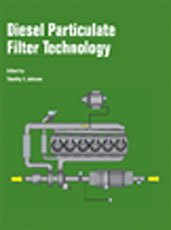Technical Paper
Challenges of Particulate Number above 10nm Emissions for a China 6 Compliant Vehicle to Meet Future Regulation
2023-04-11
2023-01-0377
As the official proposal for emission regulation Euro 7 has been released by European Commission, PN above 10nm is taken into consideration for the ultrafine particulate emissions control. The challenges of GPF filtration efficiency emerge for the light-duty manufactures to meet the future emission standards. In the present study, a China 6 compliant vehicle was tested to reveal its performance over the China 6 standards and potential to meet the upcoming Euro 7. Three GPF product types (Gen 1, Gen 2, and concept Gen 3) were mounted to the tested vehicle. WLTC tests were conducted on chassis dynamometer in laboratory as well as a self-designed aggressive cycle (“Base Cycle”) tests. To explore the GPFs performance for PN emissions above 10nm against the proposed limit 6.0E11 #/km, PN emission above 10nm were measured in our laboratory tests for both engine out and tailpipe as well as the PN emission above 23nm.

